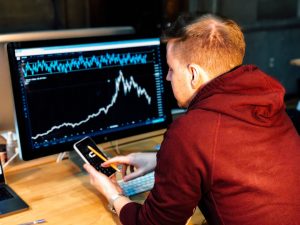Forex trading has become increasingly popular in South Africa over the past decade, with many individuals turning to this financial market as a way to generate additional income. However, learning the ins and outs of forex trading can be daunting, especially for those who are new to the market. In this article, we will provide a comprehensive guide on how to learn forex trading in South Africa.
1. Understand the Basics
Before diving into the world of forex trading, it’s important to understand the basics of the market. Forex trading involves buying and selling currencies in order to make a profit. The goal is to buy a currency at a low price and sell it at a higher price to make a profit. The currency market is open 24 hours a day, five days a week, and is the most liquid financial market in the world, with trillions of dollars being traded every day.
2. Choose a Broker
The first step in learning forex trading is to choose a reputable broker. A broker is a financial institution that allows traders to buy and sell currencies on the forex market. When choosing a broker, it’s important to look for one that is regulated by a financial authority, such as the Financial Sector Conduct Authority (FSCA) in South Africa. Other factors to consider when choosing a broker include trading fees, customer support, and the trading platform.
3. Open a Demo Account
Once you have selected a broker, the next step is to open a demo account. A demo account is a practice account that allows you to trade with virtual money. This is a great way to get a feel for the forex market and practice trading strategies without risking any real money. Most brokers offer demo accounts, which can be accessed through their trading platform.
4. Learn Technical Analysis
Technical analysis is the study of market trends and price movements through charts and other technical indicators. Learning how to read charts and interpret technical indicators is essential for successful forex trading. Some common technical indicators include moving averages, relative strength index (RSI), and Bollinger Bands.
5. Learn Fundamental Analysis
Fundamental analysis is the study of economic and political events that can affect currency prices. Traders who use fundamental analysis look at factors such as interest rates, inflation, and political stability to make trading decisions. Understanding the impact of these factors on currency prices is essential for successful forex trading.
6. Develop a Trading Strategy
Once you have a good understanding of technical and fundamental analysis, the next step is to develop a trading strategy. A trading strategy is a set of rules that you follow when entering and exiting trades. There are many different trading strategies, including scalping, swing trading, and position trading. It’s important to choose a strategy that suits your trading style and risk tolerance.
7. Practice, Practice, Practice
Practice is essential when learning forex trading. Even after you have developed a trading strategy, it’s important to continue practicing on your demo account before risking any real money. This will help you fine-tune your strategy and build confidence in your trading abilities.
Conclusion
Learning forex trading can be a challenging but rewarding experience. By understanding the basics of the market, choosing a reputable broker, and developing a trading strategy, you can increase your chances of success in the forex market. Remember to always practice on your demo account before risking any real money, and to continuously educate yourself on the latest market trends and trading techniques. With dedication and hard work, anyone can learn how to trade forex in South Africa.






